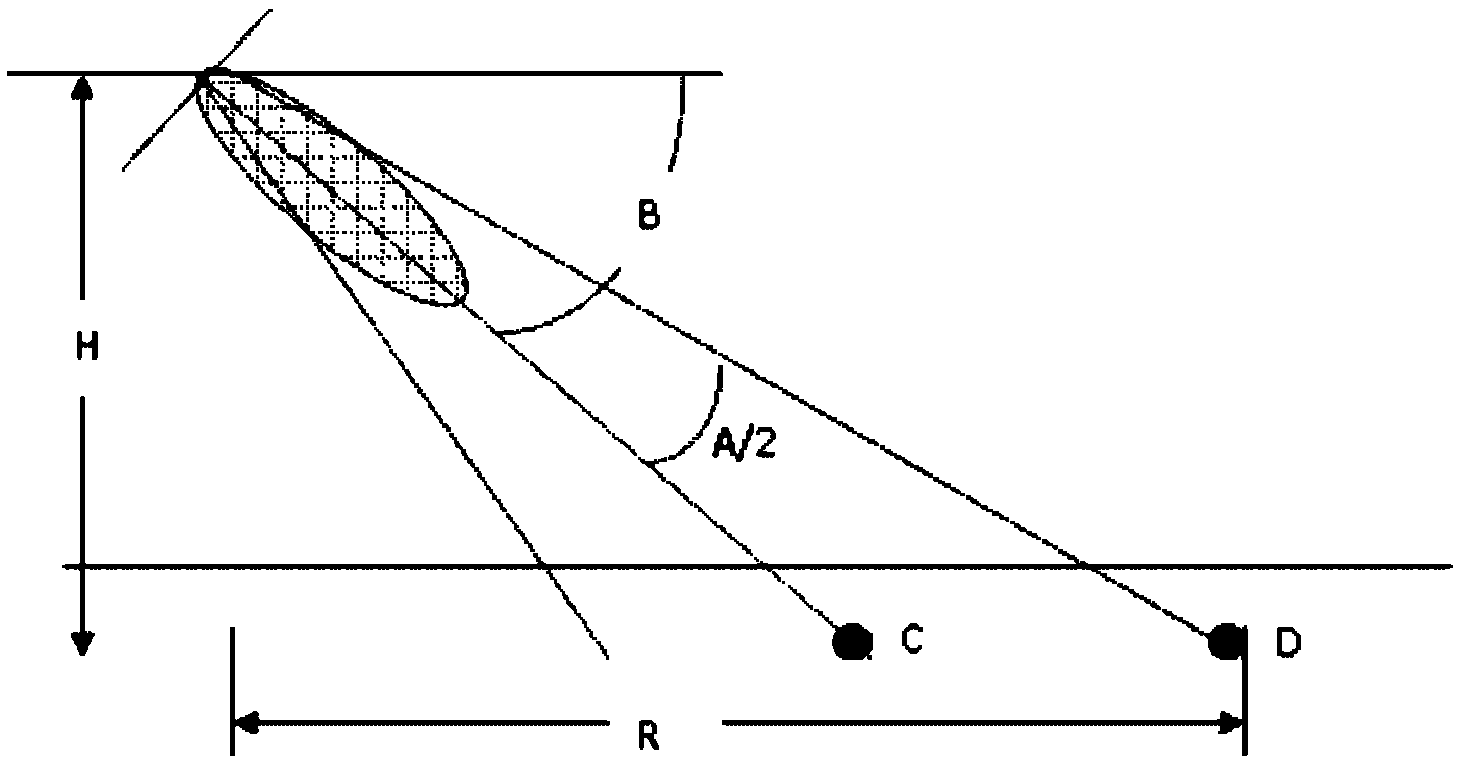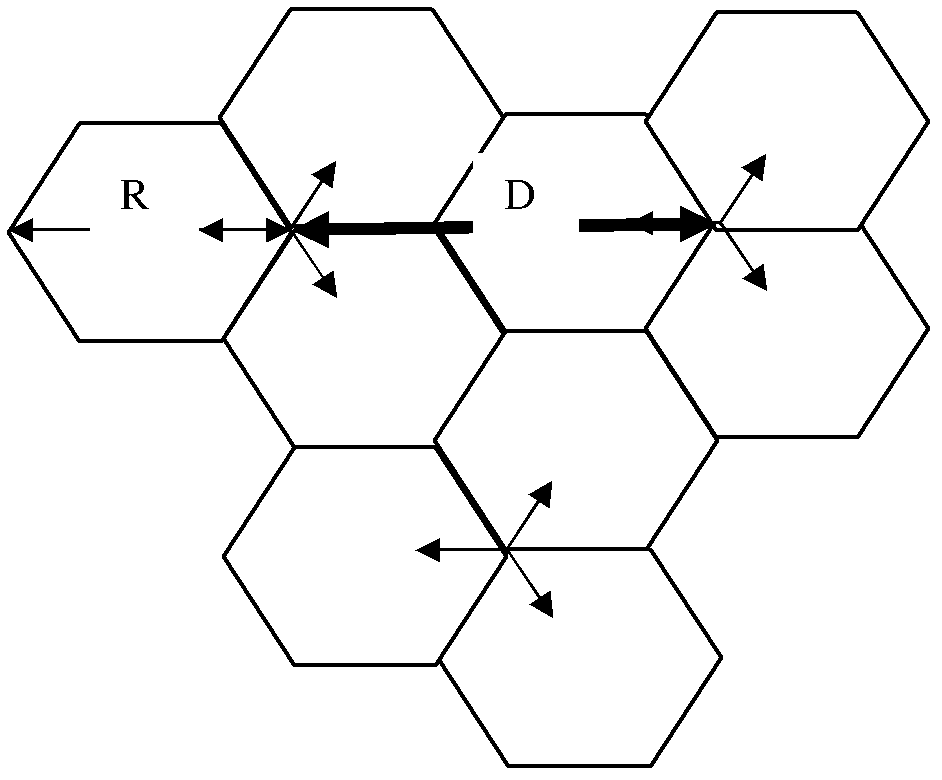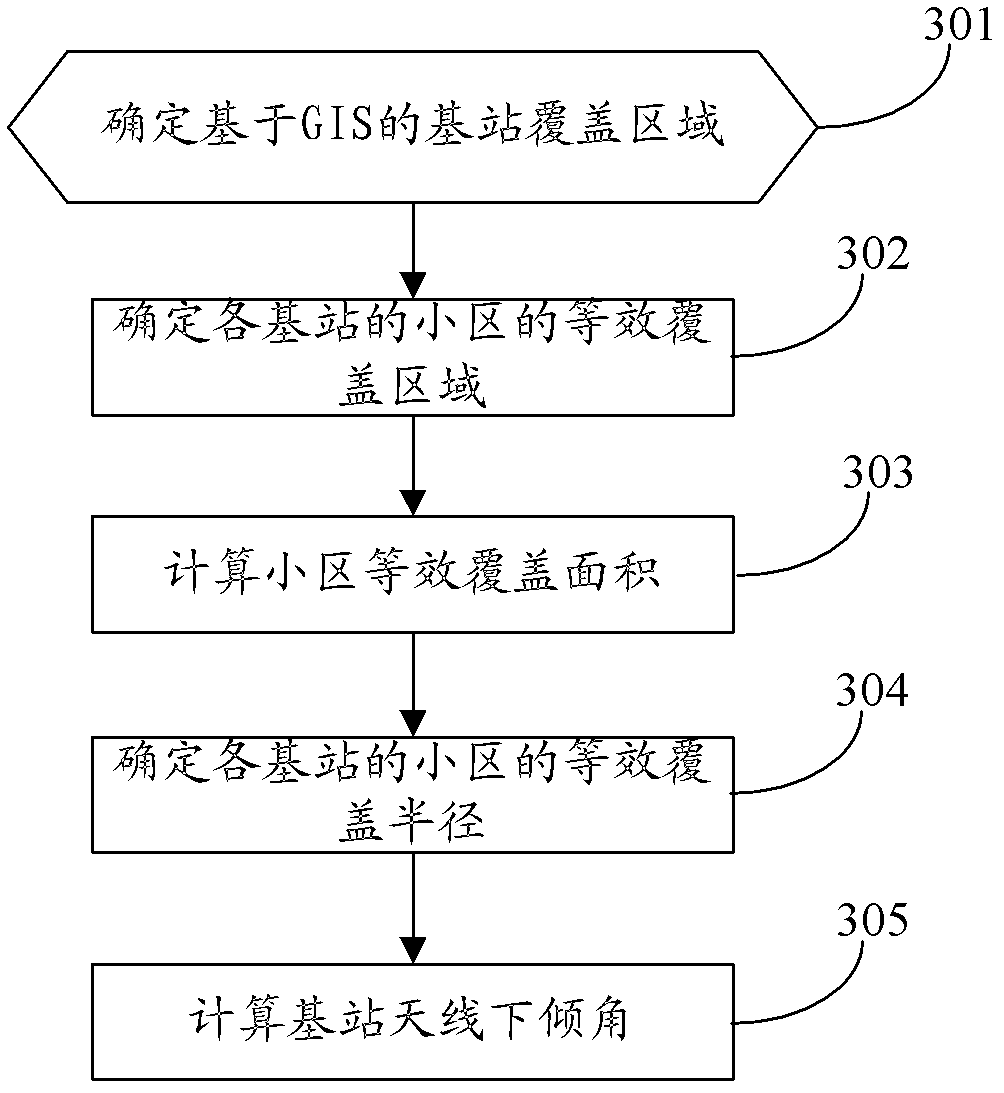Antenna downward inclination angle determination method and device based on geographic information system (GIS)
A geographic information system and antenna downtilt technology, applied in wireless communication, electrical components, network planning, etc., can solve problems such as inaccurate propagation models, unreasonable overlapping areas between cells, and unreasonable radius calculations to improve network services Quality and user experience effects, avoiding the problem of edge cell throughput decline, and avoiding the effect of low resource utilization
- Summary
- Abstract
- Description
- Claims
- Application Information
AI Technical Summary
Problems solved by technology
Method used
Image
Examples
Embodiment Construction
[0086] The basic idea of the present invention is: determine the equivalent coverage radius of the cells of each base station according to the base station location information in the geographic information system GIS and the Thiessen polygon principle; The maximum coverage radius of each base station cell; when determining that the equivalent coverage radius is less than or equal to the maximum coverage radius, determine the antenna downtilt angle of the base station to which the cell belongs with the equivalent coverage radius; determine that the equivalent coverage radius is greater than When the maximum coverage radius is used, the antenna downtilt angle of the base station to which the cell belongs is determined according to the maximum coverage radius.
[0087] In order to make the object, technical solution and advantages of the present invention clearer, the present invention will be further described in detail by citing the following embodiments and referring to the ...
PUM
 Login to View More
Login to View More Abstract
Description
Claims
Application Information
 Login to View More
Login to View More - R&D
- Intellectual Property
- Life Sciences
- Materials
- Tech Scout
- Unparalleled Data Quality
- Higher Quality Content
- 60% Fewer Hallucinations
Browse by: Latest US Patents, China's latest patents, Technical Efficacy Thesaurus, Application Domain, Technology Topic, Popular Technical Reports.
© 2025 PatSnap. All rights reserved.Legal|Privacy policy|Modern Slavery Act Transparency Statement|Sitemap|About US| Contact US: help@patsnap.com



